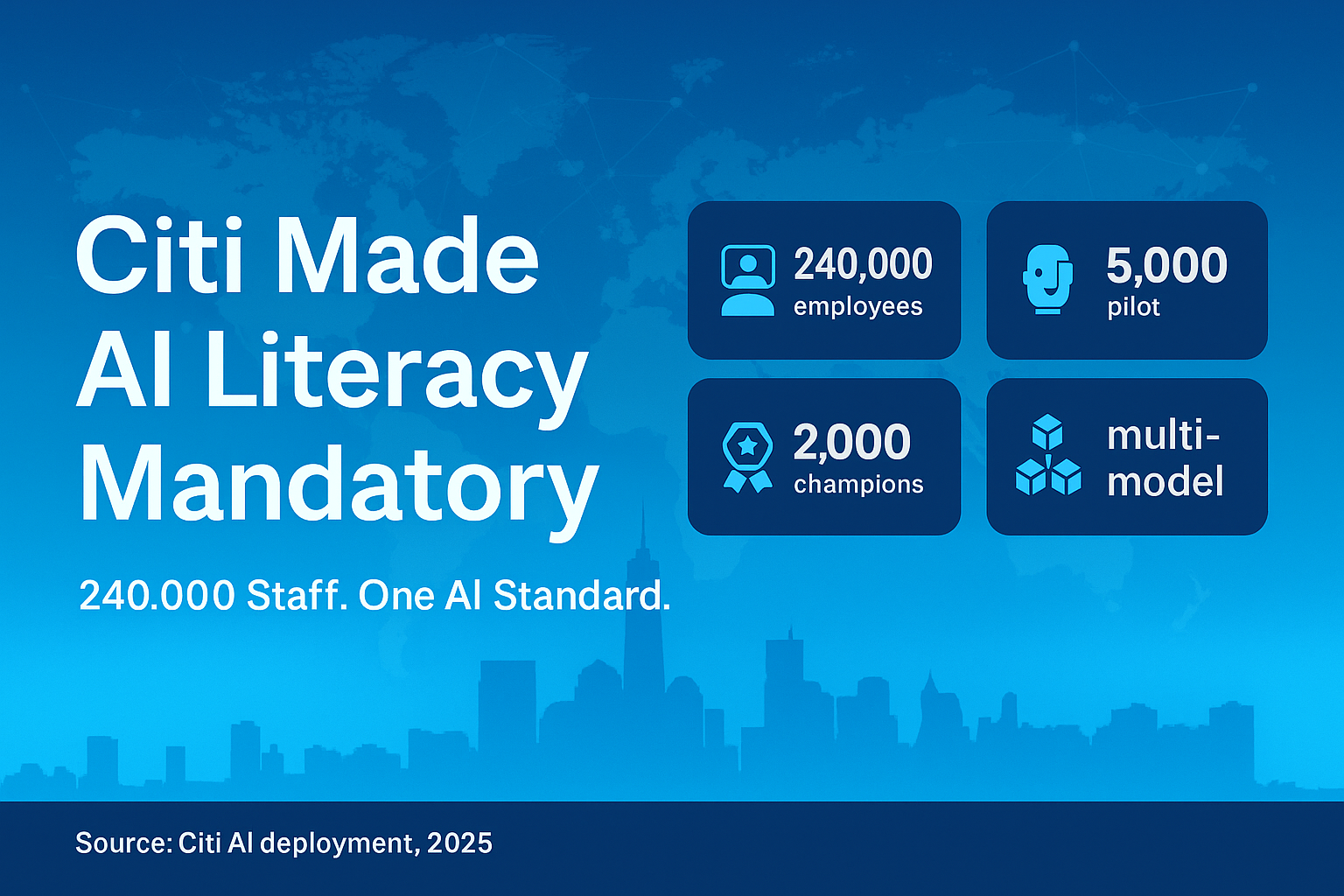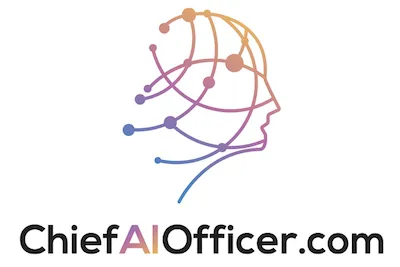Beyond Automation: How AI Empowers Human Potential in Modern Organizations
The latest episode of Using AI at Work features Kristin Ginn, a seasoned HR leader and Chief AI Officer, discussing how artificial intelligence should amplify rather than replace human capabilities. Host Chris Daigle explores the critical shift from viewing AI as a cost-cutting automation tool to recognizing it as a catalyst for unleashing human creativity, strategic thinking, and meaningful work.
From HR Leadership to AI Strategy
Ginn’s journey into AI strategy stems from extensive experience in human resources, talent development, and organizational transformation. Her background includes building HR systems from scratch for growing companies and leading enterprise-level change initiatives. This human-centered foundation profoundly shapes her approach to AI implementation.
The transition to focusing on AI wasn’t about abandoning HR expertise but rather recognizing that successful technology adoption hinges on understanding people, culture, and organizational dynamics. As she discovered through various implementation projects, technical capability alone never determines success, the human factors consistently make or break AI initiatives.
The Activation Mindset vs. Automation Mindset
The central thesis of Ginn’s approach challenges the prevailing narrative around AI in business. Rather than asking “How can AI replace human workers?” or “How can we automate this function?”, she advocates for a fundamentally different question: “How can AI activate human potential?”
This distinction proves more than semantic. The automation mindset focuses on cost reduction, headcount minimization, and efficiency gains, important considerations but ultimately limiting. The activation mindset recognizes that humans possess irreplaceable qualities: creativity, emotional intelligence, strategic thinking, relationship building, and adaptive problem-solving.
AI’s highest value comes not from replacing these human capabilities but from removing the barriers that prevent people from fully deploying them. When administrative tasks, repetitive data entry, and routine information retrieval consume 60-70% of knowledge workers’ time, there’s enormous untapped human potential waiting to be activated.
The Creativity Liberation
One of the most compelling arguments for the activation approach centers on creativity. Organizations increasingly recognize that competitive advantage comes from innovation, differentiation, and creative problem-solving. Yet most employees spend the majority of their workday on tasks that require zero creativity.
Ginn describes scenarios where marketing professionals spend hours reformatting presentations, sales teams manually update CRM entries, and customer service representatives search through documentation for standard answers. These activities don’t just waste time, they actively suppress the creative thinking these professionals were hired to provide.
AI tools can handle the reformatting, automate the data entry, and surface the relevant documentation instantly. This doesn’t eliminate jobs; it eliminates the soul-crushing aspects of jobs that prevent people from doing their most valuable work. The marketing professional can now focus on developing compelling campaign concepts. The sales team can build deeper client relationships. Customer service can deliver genuine empathy and creative problem-solving.
Building the Business Case for Activation
CFOs and executives often struggle with AI business cases because they’re measuring the wrong outcomes. Traditional ROI calculations focus on cost savings through headcount reduction or efficiency improvements. While these metrics have value, they miss the transformative potential.
Ginn advocates for measuring activation outcomes:
- Innovation velocity: How quickly can teams test and iterate on new ideas?
- Strategic output: What percentage of time do knowledge workers spend on strategic vs. tactical work?
- Employee satisfaction and retention: How does meaningful work impact talent retention?
- Revenue growth from new capabilities: What becomes possible that wasn’t before?
- Quality improvements: How does human attention on high-value activities improve outcomes?
These metrics require longer time horizons than simple automation ROI, but they capture the true business transformation potential. A company that activates human creativity across 500 employees doesn’t just save on labor costs, it potentially unlocks 500 sources of competitive advantage.
The Change Management Imperative
Despite the positive framing, Ginn acknowledges that activation-focused AI implementation still faces significant change management challenges. Employees conditioned to believe AI threatens their jobs won’t embrace tools designed to activate them without careful positioning and genuine trust-building.
Her approach emphasizes transparency about intentions. Leaders must clearly communicate: “We’re not implementing AI to eliminate positions. We’re implementing AI because we believe our people are capable of so much more than their current roles allow, and we want to remove the barriers holding them back.”
This message must be backed by actions. If AI implementations lead to layoffs despite activation messaging, trust evaporates permanently. Organizations serious about activation commit to redeploying efficiency gains toward growth initiatives, new capabilities, or enhanced service quality rather than immediate headcount reduction.
Identifying Activation Opportunities
Not all AI use cases fit the activation framework equally well. Ginn recommends starting with a simple diagnostic: interview employees about their daily work and ask two questions:
- What tasks consume your time but require little judgment or creativity?
- What would you accomplish if you had 10 extra hours per week?
The gap between these answers reveals activation opportunities. If customer service representatives spend hours searching knowledge bases but would use extra time building client relationships and identifying upsell opportunities, that’s a clear activation case for AI-powered knowledge retrieval.
If financial analysts spend days manually consolidating reports but would use extra time on predictive modeling and strategic recommendations, that’s an activation case for automated reporting. The pattern holds across functions: identify the constraints on human potential, then deploy AI to remove those constraints.
The Skills Evolution Challenge
Activation-focused AI implementation doesn’t eliminate the need for workforce development, it intensifies it. When AI handles routine tasks, organizations need employees capable of operating at higher levels of strategic thinking, creativity, and judgment.
This creates both an opportunity and a responsibility. The opportunity: employees generally welcome development that makes their work more interesting and impactful. The responsibility: organizations must invest in helping people develop these higher-order capabilities.
Ginn emphasizes that this isn’t about training people to use AI tools (though that matters). It’s about developing the uniquely human skills that AI amplifies: critical thinking, creative problem-solving, emotional intelligence, strategic communication, and adaptive learning. These have always been valuable; AI just makes them essential.
Measuring Success Differently
Traditional productivity metrics often work against activation goals. If you measure success by how many emails someone processes or how many data entries they complete, AI that handles these tasks appears to eliminate the need for that person. This reinforces automation thinking.
Activation metrics focus on outcomes that humans uniquely enable:
- Customer satisfaction and loyalty (driven by empathy and relationship-building)
- Innovation pipeline and successful launches (driven by creativity)
- Strategic decision quality (driven by judgment)
- Problem-solving effectiveness (driven by adaptive thinking)
- Cross-functional collaboration (driven by communication skills)
These metrics prove harder to quantify but more directly connect to sustainable competitive advantage. Organizations comfortable with this measurement shift can build compelling activation-focused business cases.
The Leadership Requirement
Ginn emphasizes that activation-focused AI implementation requires different leadership capabilities than automation-focused approaches. Automation projects can be managed top-down: determine the process, select the tool, implement the change, measure the cost savings.
Activation projects require collaborative design. Leaders must understand what currently prevents people from doing their best work, involve employees in identifying solutions, create psychological safety for experimentation, and maintain patient capital while activation benefits materialize.
This demands leaders who view their role as unleashing human potential rather than optimizing resource utilization. It requires believing that people want to do meaningful work and will rise to higher expectations when barriers are removed. Not all organizations or leaders operate from these premises.
Starting Small, Thinking Big
Despite the transformative vision, Ginn advocates for pragmatic implementation. Start with a single team, identify one clear activation opportunity, implement a targeted solution, and measure both efficiency and activation outcomes.
If a content team spends 40% of their time on image resizing and formatting, implement AI tools to handle these tasks. But don’t stop at measuring time saved, measure the increase in original content production, creative experimentation, or strategic content planning. Document both the quantitative and qualitative changes.
These pilot successes build credibility for broader implementation while teaching valuable lessons about change management, tool selection, and outcome measurement. They also create internal advocates who can authentically share their activation experiences with skeptical colleagues.
The Long-Term Organizational Shift
Looking ahead, Ginn envisions organizations structured around fundamentally different principles. Rather than designing jobs to execute processes efficiently, companies design roles to maximize human potential while using AI to handle everything else.
This inverts traditional organizational thinking. Instead of “What tasks need doing, and how do we assign them to people?” the question becomes “What unique value can humans create, and how do we use technology to remove everything else?”
This shift won’t happen overnight and may never fully materialize in all organizations. But companies that move even partially in this direction may discover sustainable competitive advantages that automation-focused competitors cannot easily replicate.
Practical Next Steps for Organizations
For leaders interested in activation-focused AI implementation:
- Audit current time allocation: Understand where employees actually spend their time vs. where they create value
- Identify constraint removal opportunities: What prevents people from operating at their highest potential?
- Pilot with volunteers: Start with teams eager to experiment rather than mandating change
- Measure activation outcomes: Track strategic output, creativity, and innovation alongside efficiency
- Invest in capability development: Help people grow into the higher-level work that AI makes possible
- Communicate intentions clearly: Be transparent about activation goals vs. automation goals
- Demonstrate commitment: Ensure early implementations don’t contradict activation messaging through layoffs
The opportunity isn’t just making organizations more efficient, it’s making them more human by allowing people to focus on work that requires the irreplaceable qualities that define us.
Ready to explore how AI can activate rather than automate your workforce? Listen to the full episode for deeper insights on building activation-focused AI strategies that enhance rather than replace human capabilities.




